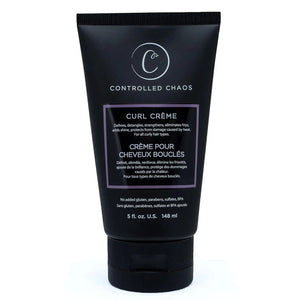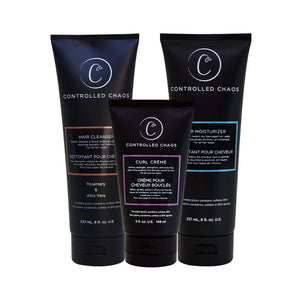

Have you ever found yourself standing in front of the mirror, perplexed by the texture of your hair? You're not alone. The spectrum of hair types can be quite confusing, especially when it comes to distinguishing between waves and curls. Whether you're on a quest for the perfect hair care routine or simply curious about your natural locks, understanding the difference between wavy and curly hair is the first step to embracing and nurturing your unique mane.
Understanding Hair Texture:
Before diving into the intricacies of waves and curls, let's first grasp the basics of hair texture. Hair texture refers to the thickness or diameter of individual hair strands. This can range from fine to coarse. Additionally, the shape of the hair follicle determines whether hair appears straight, wavy, curly, or coily.
Wavy Hair:
Wavy hair typically falls between straight and curly on the texture spectrum. It's characterized by gentle curves and may form an "S" shape or loose waves. Wavy hair tends to have more volume and body compared to straight hair but less definition than curly or coily hair.
Identifying Wavy Hair:
- Wavy hair forms loose, gentle curves rather than tight spirals.
- Waves may start at the mid-lengths of the hair rather than the roots.
- Wavy hair often has a natural, effortless appearance.
- It tends to frizz in humid conditions but can also hold styles like beach waves well.
Curly Hair:
Curly hair, on the other hand, features more pronounced coils or spirals. It ranges from loose curls to tight corkscrews and is known for its bounce and springiness. Curly hair tends to be more prone to dryness and requires specific care to maintain its shape and moisture levels.
Identifying Curly Hair:
- Curly hair forms distinct spirals or ringlets.
- Curls start closer to the roots, giving the hair more volume.
- Curly hair may shrink in length when dry due to its coiled structure.
- It tends to be more prone to frizz, especially in humid climates.
Determining Your Hair Type:
Now that you have a basic understanding of wavy and curly hair, you may be wondering, "What type of hair do I have?" While it's easy to get lost in the complexities of hair typing systems, the most important factor is to observe your own hair's patterns and behavior.
Tips for Identifying Your Hair Type:
- Observe Your Natural Texture: Take a close look at how your hair dries naturally after washing. Does it form loose waves or tight curls?
- Consider Your Hair's Behavior: How does your hair respond to different styling techniques and products? Wavy hair may hold beachy waves effortlessly, while curly hair may require more defined styling methods.
- Consult a Professional: If you're still uncertain about your hair type, consider consulting a hairstylist who specializes in curly or textured hair. They can provide personalized insights and recommendations based on your unique hair characteristics.
Embracing Your Natural Texture:
Regardless of whether your hair is wavy or curly, embracing your natural texture is key to maintaining healthy and beautiful locks. Understanding how to properly care for your specific hair type can make a significant difference in its appearance and overall health.
General Tips for Wavy and Curly Hair Care:
- Use sulfate-free shampoos and moisturizing conditioners to prevent dryness and frizz.
- Incorporate leave-in conditioners or curl-enhancing creams to define and hydrate curls or waves.
- Avoid over-brushing or combing dry hair, as this can disrupt natural curl patterns and cause frizz.
- Experiment with different styling techniques, such as diffusing or air-drying, to enhance your hair's natural texture.
Styling Tips for Wavy Hair:
If you've determined that your hair leans more towards the wavy side, you're in luck! Wavy hair offers versatility and can be styled in various ways to accentuate its natural texture.
Beach Waves:
- Achieve effortless, beachy waves by spritzing damp hair with a sea salt spray and scrunching it gently.
- Let your hair air-dry or use a diffuser on low heat to enhance waves without causing frizz.
- For a polished look, curl random sections of hair with a large-barrel curling iron, alternating directions for a more natural appearance.
Braids and Twists:
- Create soft, romantic braids or twists by loosely weaving sections of hair together.
- After securing the braids, gently tug on the sides to loosen them for a relaxed, bohemian vibe.
- Leave the braids in overnight for effortless waves in the morning, perfect for a low-maintenance hairstyle.
Half-Up Styles:
- Half-up hairstyles are perfect for showcasing wavy hair while keeping it out of your face.
- Gather the top section of your hair and secure it with a clip or hair tie, leaving the rest of your waves cascading down your shoulders.
- For added flair, twist or braid the pinned section before securing it for an elevated look.
Styling Tips for Curly Hair:
Curly hair is full of personality and character, and with the right styling techniques, you can enhance its natural beauty and bounce.
Defined Curls:
- Define your curls by applying a curl-enhancing cream or gel to damp hair, focusing on evenly distributing the product from root to tip.
- Use a diffuser attachment on your blow dryer to gently dry your curls while maintaining their shape.
- Avoid touching your curls while they dry to prevent frizz and maintain definition.
Pineapple Updo:
- Preserve your curls overnight by styling them into a pineapple updo.
- Gather all of your hair at the top of your head and secure it loosely with a scrunchie or hair tie.
- In the morning, release the pineapple and fluff your curls with your fingers for refreshed, voluminous curls.
Twist-Out or Braid-Out:
- Achieve elongated, defined curls with a twist-out or braid-out hairstyle.
- Section your damp hair into small sections and twist or braid each section tightly.
- Allow your hair to air-dry or use a hooded dryer to speed up the drying process.
- Once your hair is completely dry, unravel the twists or braids and gently separate the curls for added volume and definition.
Advanced Care Techniques:
Taking your hair care routine to the next level involves understanding advanced techniques tailored to your specific hair type. Here are some tips to address common concerns and elevate your wavy or curly hair care routine:
Deep Conditioning Treatments:
- Incorporate regular deep conditioning treatments into your hair care routine to nourish and hydrate your waves or curls.
- Opt for deep conditioning masks enriched with moisturizing ingredients like shea butter, coconut oil, or argan oil.
- Apply the deep conditioner to damp hair, focusing on the mid-lengths and ends, and leave it on for the recommended time before rinsing thoroughly.
Protective Hairstyles:
- Embrace protective hairstyles to minimize damage and maintain moisture levels in your wavy or curly hair.
- Protective styles such as braids, twists, or buns can help protect your hair from environmental stressors and prevent breakage.
- Before styling, apply a lightweight leave-in conditioner or oil to provide added moisture and protection.
Satin or Silk Pillowcases:
- Switch to satin or silk pillowcases to reduce friction and minimize frizz while you sleep.
- Unlike cotton pillowcases, which can cause friction and absorb moisture from your hair, satin or silk pillowcases help retain moisture and preserve your hair's natural oils.
- Additionally, satin or silk pillowcases are gentler on your hair, reducing the risk of tangles and breakage.
Advanced Styling Techniques:
Elevate your styling game with advanced techniques designed to enhance the natural beauty of your wavy or curly hair.
Plopping:
- Plopping is a popular styling technique for enhancing curls and reducing frizz.
- To plop your hair, lay a microfiber towel or cotton T-shirt flat on a surface and flip your hair over onto the fabric.
- Gently wrap the fabric around your hair, creating a turban-like shape, and secure it in place.
- Leave your hair plopped for 20-30 minutes to allow excess moisture to be absorbed, then release and style as desired.
Diffusing:
- Master the art of diffusing to speed up the drying process while maintaining your hair's natural curl pattern.
- Use a diffuser attachment on your blow dryer and set it to low or medium heat.
- Hold the diffuser close to your hair and scrunch your curls upward as you dry to encourage definition and volume.
- Avoid overheating your hair by keeping the dryer on a low setting and moving it around to distribute heat evenly.
Curl Refreshing:
- Extend the life of your curls between wash days with a curl refreshing spray or mist.
- Mix water with a lightweight leave-in conditioner or curl refresher spray in a spray bottle and mist it over your curls.
- Gently scrunch your hair with your hands to revive the curl pattern and eliminate frizz.
- For added moisture, follow up with a small amount of hair oil or serum to seal in hydration and add shine.
Conclusion:
By incorporating advanced care techniques and styling methods into your wavy or curly hair routine, you can unlock the full potential of your natural texture and achieve healthy, vibrant locks. Whether you're deep conditioning to nourish your curls, plopping to enhance your waves, or mastering the art of diffusing, there are endless opportunities to elevate your hair care and styling game. With patience, experimentation, and a little bit of creativity, you can embrace your unique hair texture with confidence and rock your signature style every day.




















